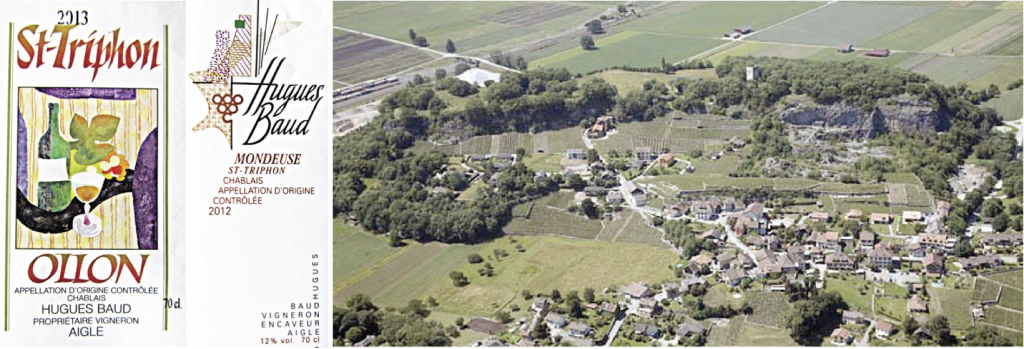September 2, 2023
The conference will be followed by an excursion to local Triassic outcrops, including Anisian limestone of Saint-Triphon, late Triassic salt mine of Bex and look at local wineyard growth on Triassic rocks. Evening meal in a prealp’s chalet.
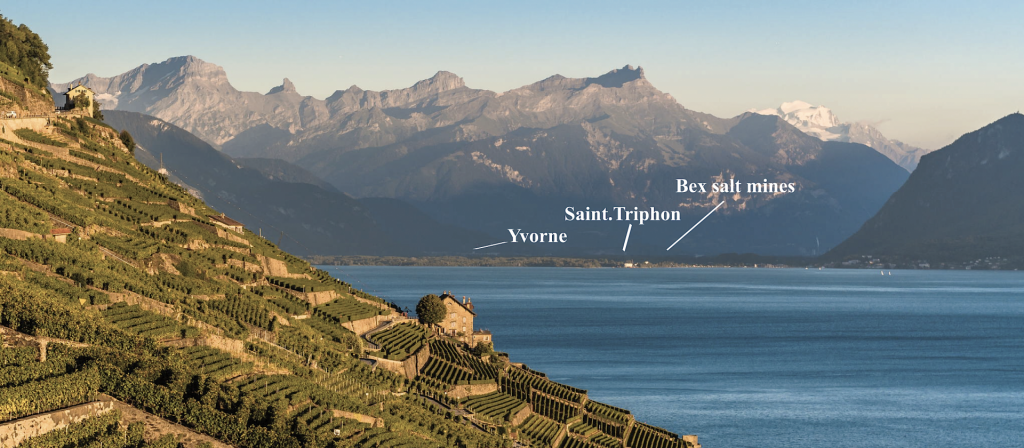
The cost is CHF 100.- (includes bus travel, field lunch and dinner, excursion guidebook).
Departure: 8h15, in front of Geopolis Building of Lausanne University, close to Mouline Metro-station. Please meet outside of Zelig (the student bar) in the parking area to the southeast of the Geopolis buidling at 8am.
About 9h15, Stop 1: Saint-Triphon, Fontenaille quarry, lower-middle Anisian.
About 11h, Stop 2: Saint-Triphon, Andonce quarry, middle Anisian.
12h00-13h30 Bex, Lunch at Le Bouillet, near Salt Mines entrance
13h30 – 16h: Stop 3: Bex: visit of the Salt Mine, within anhydrite rocks of Norian age followed by look on woneyard growing on Norian gypsum tocks,
About 17h Leysin, mountain village, some history, and Anisian outcrops in the landscape 17h30 Chalet -Restaurant Prafandaz -visit landscape around and degustation of typical country raclette.
About 21h, back to Lausanne.
Saint-Triphon
The most fascinating Briançonnais outcrops of the W Alps and consists of a famous “inselberg” quarries in the Rhone valley near Aigle.
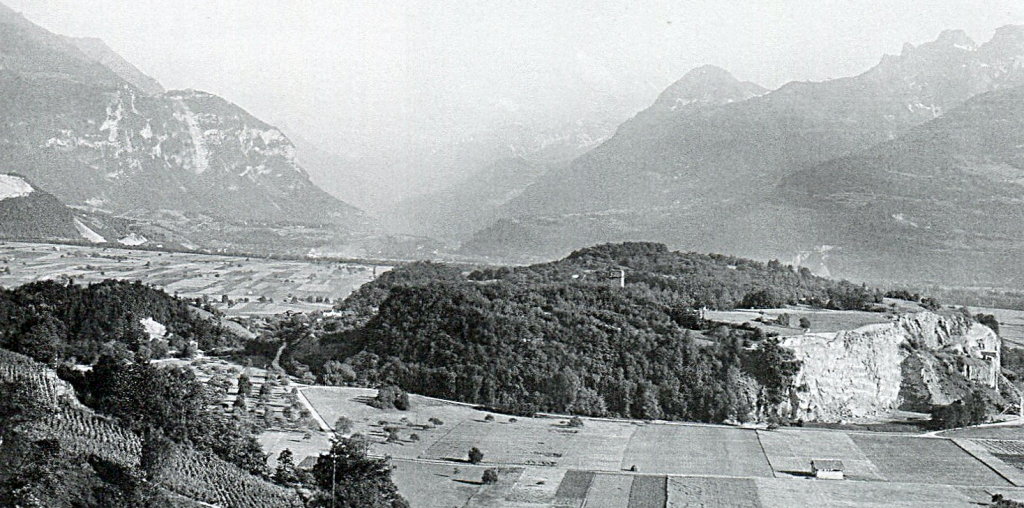
It is interesting to note that historically the Triassic limestones of Saint-Triphon delivered the first biostratigraphical evidence of Triassic age in the Alps claimed by Mousson, Prof. von Zürich, in 1822 « Ich habe Muschelkalk bei Saint-Triphon gefunden » and demonstrated by Quenstedt in 1838.
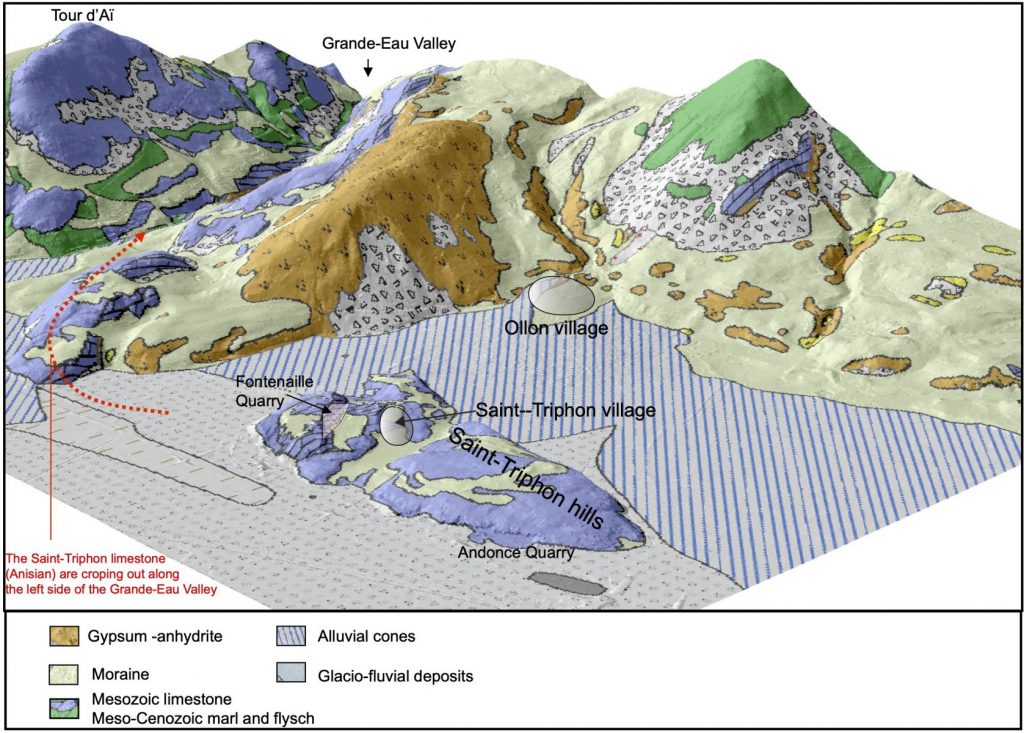
It is the type locality of the Formation de Saint-Triphon, lower to middle Anisian in age, Formation that can be followed all along the Briançonnais domain of the Western Alps from Liguria to Giswil Klippe of Central Switzerland. These quarries outcrops are important in terms of geological science history, important of history of old quarry exploitation, of unique and pedagogic outcrops for earth science teaching and for permanent education.
The salt mines of Bex
The Salt mines of Bex, North of the Bex Village known since 1684, are still in activity and provide all the salt needed by the county of Vaud and the chemical industries of Monthey. The salt is included in a huge mass of Upper Triassic anhydrite, belonging to Sub-Mediane Melange Zone, which covers a large area north and northeast of Bex Village.
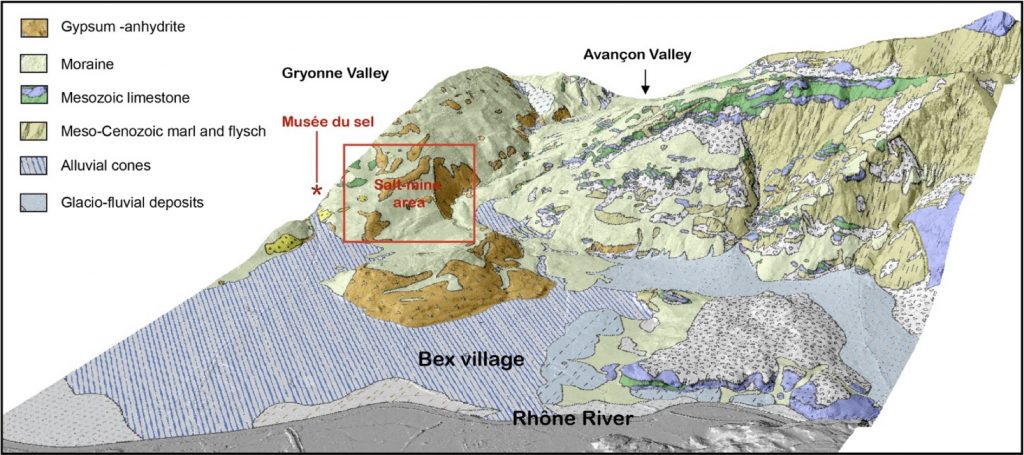
The salt does not form solid lenses surrounded by anhydrite, but appears as “cement” in a tectonic breccia where it fills the voids (25 % in volume) between the bits of anhydrite, shale and dolomite. The salt is extracted by water injections through borings drilled from inside the old mines. Annual production for the last years: 40’000 to 50’000 tons.
The vineyards during the field trip
The Bex vineyards growing on gypsum
Just North of Bex village is a hill named “Le Montet” entirely built by anhydrite in the ground and gypsum at the surface (Figs. below). At the top of the hill is a large gypsum quarry providing the calcium sulfate for surrounding plaster factories.
The South oriented vineyards benefit from fine climatic condition (earliest flowering from all the area) with the “Foehn” a dry and warm wind coming from the South and from the gypsum substratum which brought a specific fine minerality. The main grape is Chasselas among the white, Gamay and Pinot for the red.

The Saint-Triphon terroir growing on limestone
A small vineyard is growing between the Saint-Triphon hills on the South-West side of the village (Figs. below). With a limestone ground, the Saint-Triphon vineyard terroir is quiet different from the surrounding one’s growing on gypsum. A local winemaker restored succesfully old grape type as the red “Mondeuse” and also white grape assemblage, and is producing a very fine type Chasselas.
